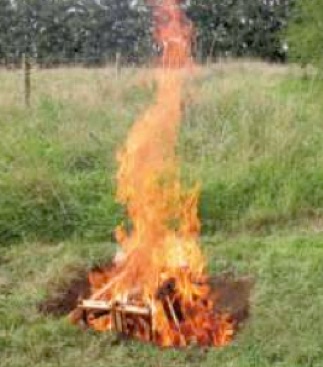American foulbrood






American foulbrood (AFB) is an infectious disease of the larval stage of the honeybee and occurs throughout the world. It is caused by Paenibacillus larvae, a Gram-positive bacterium that can produce over one billion spores in each infected larva. The bacterium is a, straight or sometimes curved rod 0.5 μm wide with a rounded end; cells vary greatly in length ranging from 1.5 to 6 μm long. Some strains are motile. The spores are extremely heat stable and resistant to chemical agents. Only spores are capable of transmitting the disease. (O.I.E. Terrestrial Manual 2008)
The infection can be transmitted to larvae by nurse bees that feed them with spores contemned food or by spores remaining at the base of a brood cell. The susceptibility of larvae to AFB disease decreases with increasing age; larvae cannot be infected later than 53 hours after hatching. The mean lethal dose (LD50= spore dose at which 50% of the larvae are killed) needed to initiate infection, though very variable, is less than 10 spores in 24–48 hour-old bee larvae. (O.I.E. Terrestrial Manual 2008).
The disease is most commonly spread between colonies by beekeepers moving combs containing the remains of diseased brood or use of spore-contaminated wax to manufacture foundation (O.I.E. Terrestrial Manual 2008). In addition, feeding or robbing of honey or beebread, or introduction of new bees or queens can also spread the disease. The only “treatment” suggested for this disease is to burn the infected hives and equipment before the disease spreads across the entire apiary as shown in Figure 2.

Fig 1: AFB-ropiness test.

Fig 2: AFB “treatment” suggested.
You can find detailed information about AFB following the downloading the leaflet on brood diseases published by National Bee Unit



Developed by
Dr. Guido Cordoni DVM, PGDip, PhD, MRCVS